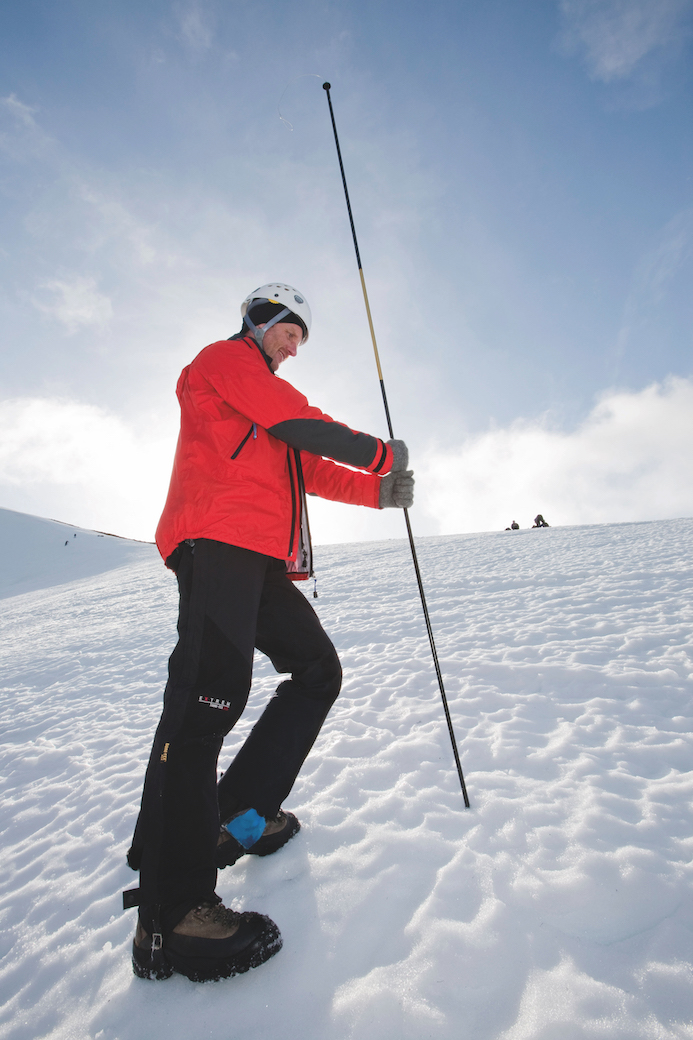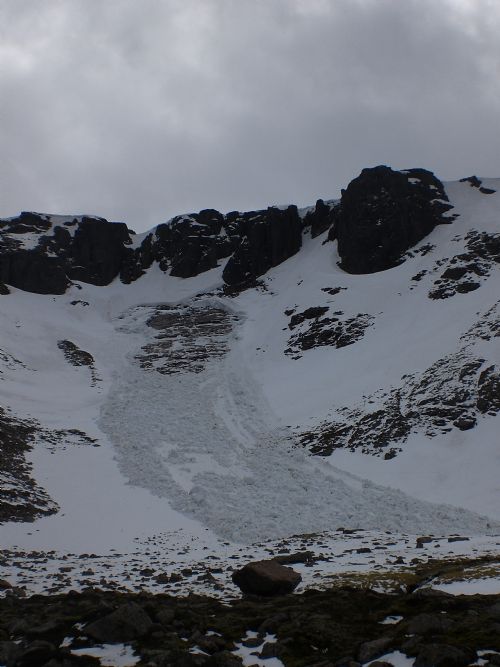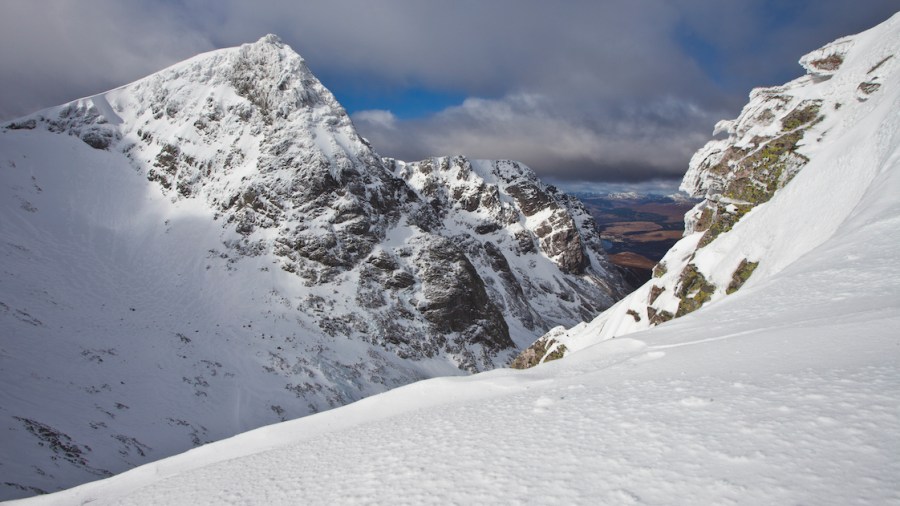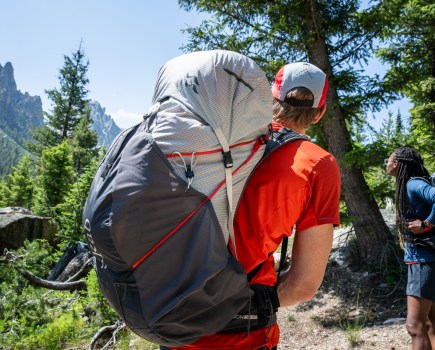Avalanche danger can seem daunting – but the good news is it can often be predicted and avoided. Mark Diggins of the Scottish Avalanche Information Service tells us how.
Given the current lockdown, it’s unlikely that avalanche danger is looming large in many people’s minds at the moment. But in a ‘normal’ year, dozens of people are caught in avalanches in the British hills and mountains. At some point the hills will ‘reopen’, and knowing how to be safe in them in winter conditions won’t be any less important.
Good avalanche awareness is a crucial weapon in your winter skills arsenal. From reading avalanche reports and planning low-risk routes to assessing the weather and the snowpack as you walk, knowing how to read the danger signals will help you to travel safely through snowy terrain.
Avalanches can happen anywhere – the UK’s deadliest ever avalanche wasn’t in the Cairngorms or Glen Coe, but in East Sussex, when a huge build-up of snow slid into the town of Lewes and killed eight people. But the reports produced by the Scottish Avalanche Information Service (SAIS) are key reading for anybody heading out into Scotland’s mountains during the winter months. We asked SAIS coordinator Mark Diggins to share his insight into avalanche safety.
When do most avalanches related to human activity occur?
Most occur when people are on foot. That might be when they’re going to a climb or coming off a climb down a col, but also we have walkers being avalanched and, unfortunately, some of the worst avalanche incidents in Scotland have involved people walking up mountains. There was an infamous one on Buachaille Etive Mòr [in 2009] and also a party of hillwalkers caught in an avalanche in the Cairngorms in 2013. Often they are larger group. The press frequently talks about climbers being avalanched, but hill walkers are part of that group.

An SAIS forecast demonstrates how to use an avalanche probe on Cairn Gorm. Pic: Alamy
How frequently do avalanches take place in Scotland over the winter months?
In 2019/ 20, 241 avalanches were observed and 27 were recorded as triggered by humans. Of those, 19 were triggered by people on foot and one fatality was recorded. Fatalities are a rare occurrence – but you only need one incidence and that could be your life.
So staying alert is crucial…
Yes – think about driving a car. You wear a seatbelt, you look around you and you don’t have a crash because you’re highly alert. But when you get tired and you’re not paying attention, that’s when accidents can happen. It’s similar in the mountains. When you’re not vigilant, you can get caught out.
What weather conditions are most conducive to avalanche risk?
The primary factor is wind. When snow gets laid down on lee slopes or in wind-sheltered areas and it’s moved in the process of being laid down, that’s when it’s most unstable.
How about terrain – where is the risk the greatest?
Usually the greatest risk is when you start to go into the headwalls of corries. The optimum angle for an avalanche is 35 degrees – that’s when most
avalanches are triggered. But you can be avalanched by a trigger above you, whether that’s another person or a cornice collapse that hits those slopes high up.
Other than checking the avalanche forecast, what should winter walkers do to minimise their risk of being involved in an avalanche?
The most important thing for anybody going to the mountains is planning. The planning – avalanche hazard evaluation – is 70 to 80 per cent of risk reduction. Look at the report, the weather, where the snow lies, the winds. This will give you good historical information, so when you’re ready to go out you’ve been able to look at the different areas and see where the hazard level is lower and which aspects are hazardous. You can use that to plan your journey. Our ‘Be Avalanche Aware’ app offers really good information in terms of how to plan.
How about on the hill?

Aftermath of an avalanche in Coire nan Lochain
If you’ve done your preparation, you’ll have a pretty good idea of what you’re facing by the time you’ve parked your car and started on your journey. But, of course, in our environment things can change – the wind could be stronger, there could be more snow falling than we expected. So the next job is verifying the information you gathered in the planning process. Move vigilantly and observe the weather, what’s happening under your feet, what other people are doing. Tune into your environment and collect all those little bits of data which may not seem significant independently but, when all collected, can give you really important information. It’s all about verifying your forecasts. That way, by the time you’re in a key place you should have spent so much time gathering information that you’re in a good position to decide how to proceed.
How do you go about assessing avalanche hazard for your reports?
We will go to a place to identify what the avalanche hazard is with minimal risk to ourselves – somewhere quite small, but where snow is accumulating. Once we’ve been to that safe place and gathered good information, we can then see what the spread is of that particular snow stability or instability. We travel to different altitudes and different aspects.
How many people use your service every year?
Normally we will have around a million people looking at the avalanche report and the mountain information or blogs over 3-4 months in the winter.
How many of you are there on the team?
We have six areas and we have a core team of 14. We also have others in development and training – it takes 3-4 years for experienced climbers or skiers who have applied to be trained and examined. In total, there are 26 forecasters and trainees.
Has the coronavirus crisis affected your job?
Yes! We have to be careful who we make contact with and so we try and work in isolation or in small bubbles. We recognise that we’re a public service providing important information and so, if we did get covid, that would have a real impact on our service.
Find more information on avalanche safety and regularly updated reports on avalanche conditions across Scotland at www.sais.gov.uk.







